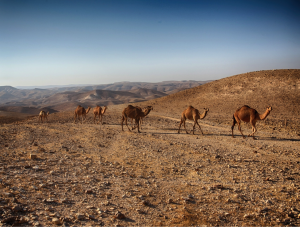What is the Historical Significance of the Dead Sea?

The area around the Dead Sea, despite its misleading name, is actually an area teeming with life. The historical, religious, and cultural significance of the Dead Sea can’t be denied either, especially since the Dead Sea biblical scrolls were discovered here.
The Dead Sea is not actually a ‘sea’ – it is a body of water located inland; in other words, it’s a lake. It is believed that the Dead Sea got its name because of the high salt and mineral content of the water, which does not encourage the development of plant or animal life. Typically, the seas of the world have a 4% salinity level, the Dead Sea’s salinity level is as much as 30%. But apart from its unique characteristics, what makes the Dead Sea so special? What is the historical, cultural, and religious significance of the Dead Sea? Let’s find out.
The Dead Sea in the Christian Bible
The Dead Sea has been mentioned a number of times in the Christian Bible, which proves its significance. One of the most famous people in the Bible, David (the story of David & Goliath) is mentioned as hiding from King Saul in the region of the Dead Sea. In the same area, it has been mentioned that David went inside a cave where he saw a sleeping King Saul, and he proceeded to cut off a part of the King’s garment in order to prove that he did not want to harm the king (even if he could have).
Another mention of the Dead Sea in the Bible is in the Book of Genesis, where it is said that a war occurred amongst several kings in the region of the Dead Sea. In the scripture, the Dead Sea is referred to as the Valley of Siddim, otherwise known as the ‘Salt Sea’.
The Dead Sea Scrolls
In the 1950s, a shepherd was looking for his lost sheep in the Qumran caves, and he accidentally came across the now-famous Dead Sea Scrolls. While he was looking for his sheep, he threw a rock into a nearby cave, and the sound made by the stone was unusual. He went into the cave to investigate, and he found a clay jar. This clay jar contained some very old parchments, which turned out to be the Dead Sea Scrolls. These have a strong historical significance, and an examination of the scrolls proved that they were written by hand in a very old version or style of Hebrew – in fact, it is the oldest style of Hebrew ever found.
The Dead Sea Scrolls are comprised of more than a thousand manuscripts discovered at the Dead Sea’s northern portion, close to Qumran, in a total of 11 caves.
Aside from these, the area of the Dead Sea is where many archaeological artifacts have been found and where the ruins of Masada (where an ancient siege took place) can be visited as well.

